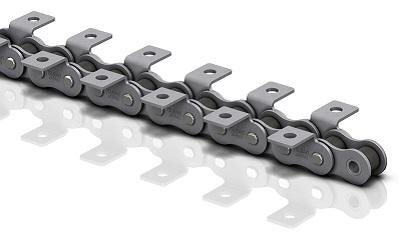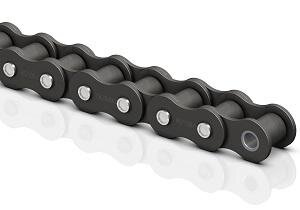Why Durability is Key for Today's Chains
Since the industrial revolution, roller chain design has remained relatively stable. However, the most crucial developments have responded to the need to increase chain durability and lifespan. Not only has this improved safety, but these advances have driven down total cost while improving operational productivity.
Established in 1917, Tsubakimoto Chain Company is the world's premier manufacturer of power transmission products with strong market positions in premium quality industrial drive & conveyor chains and associated power transmission components such as cam clutches, reducers & linear actuators. With a turnover exceeding $2 Billion US Dollars & 9000 employees, the Tsubaki group includes 41 manufacturing locations and 81 group companies worldwide. Our production and sales networks are now more developed than ever...
Trends in Specifying Chains for today's Applications and Protecting the Environment
The trend for improved chain durability across all types of applications is increasing in the face of growing challenges to improve operational efficiency and environmental targets. While the benefit of low cost chains used to be reflected purely in the initial procurement budget, the consequences of increased maintenance and downtime in chain replacement is now becoming clearer as an added cost. With premium chains potentially lasting three to four times longer than low cost versions, more frequent chain replacement increases expenditure over the long term, as well as impacting operational productivity and impacting the environment through extra lubrication and steel required to manufacture more chains.
While roller chain design has remained relatively stable since 1880, the biggest change in technology has come from the advances that extend durability and lifespan. As efficient operations look increasingly at total cost of ownership, this coincides with a shifting perception that the chain is no longer a basic commodity but is today an integral component of a mechanical operation.

Advances in Chain Durability
Tsubaki chains are treated with shot peening, a process that increases resistance to fatigue failure, stress corrosion cracking and corrosion fatigue, as well as cavitation erosion. Impacting a surface with shot, using round metallic or ceramic particles, and with force sufficient to cause deformation, the process adds strength and reduces the stress profile.
Traditionally, the connecting link is the proverbial weakest link of a chain with a fatigue strength 20% lower than that of the rest. Tsubaki developed a special process to eliminate this loss of fatigue strength: the patented ring coining process. This adds strength, reinforcing the area surrounding the connection between the pin and link plate that allows the chain to be specified to its full kW rating.
Applications that are subject to high levels of dust and grit, like saw mills, brick plants, or mines, need a higher level of durability. One of the latest advances is a chain with nickel-plated outer chain plates and hardened pins. These features are included on Tsubaki's Titan chain, which also has bushes with specially designed lubrication grooves to hold lube at the point where friction reaches its peak.
The Development of Lubrication-free Roller Chains
A significant technological advance in design was introduced by Tsubaki in 1988 with the world's first lube-free roller chain. The Lambda lubrication-free chain was designed for applications that were difficult to lubricate regularly, or those that were inaccessible. Another critical application for the Lambda would include those where lubrication could contaminate the manufactured product or environment. The food and beverage sector would benefit greatly, as would wider hygienic applications.
Now in its sixth generation, the Lambda Lube Free chain is supplied impregnated with NSF-H1 food grade lubricant, meaning the chain can be used across applications in the food industry. H3 grade oil is also available on request. While the chains can operate in temperatures from -10 to 150°C, a heat resistant version is available that pushes this figure to 230°C.

Anti-corrosion Technology
For as long as chains have been used to drive applications in wet, saline and chemical environments, rust has been an issue. Corrosion reduces chain performance and efficiency, creates contamination and leads to premature failure. For marine and outdoor applications, as well as those involving regular washdowns, in 1989 Tsubaki launched its first surface-treated chain, which underwent 300 hours of salt spray testing without developing rust.
The fourth and current generation of the anti-corrosion chain, Tsubaki's Neptune, includes a special coating as well as a resin applied over the carbon-steel base chain. Unlike some other chains subjected to anti-corrosion treatments, the Neptune retains the same strength as a standard carbon steel chain. Tested to withstand 700 hours of salt water spray, Neptune is also tested against 2,000 hours of sodium hypochlorite and 5% sodium hydroxide exposure, remaining corrosion-free.
To get in touch with a Tsubaki sales representative, click here and we will get back back to you as soon as possible!
